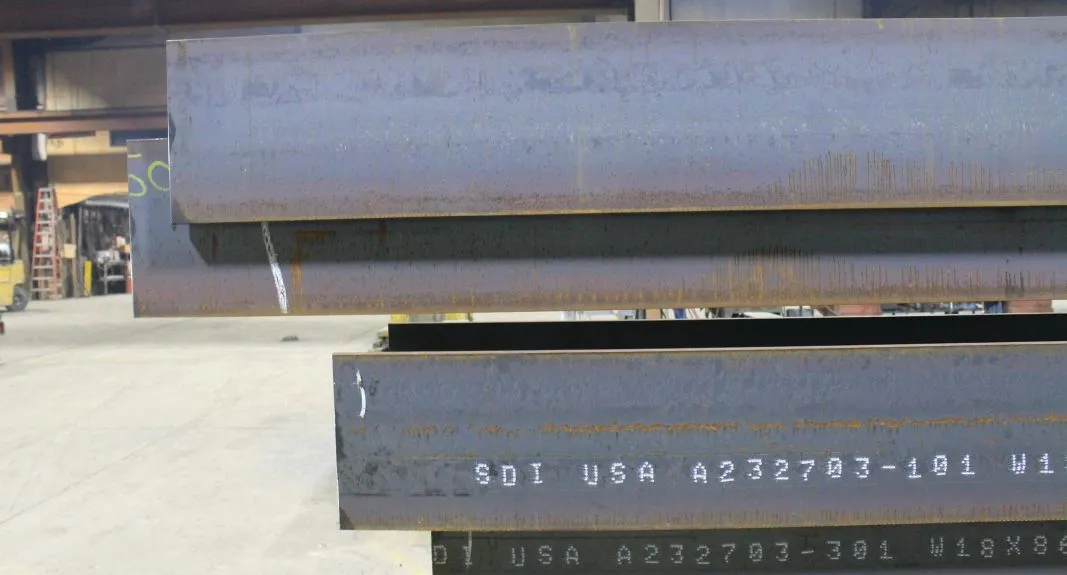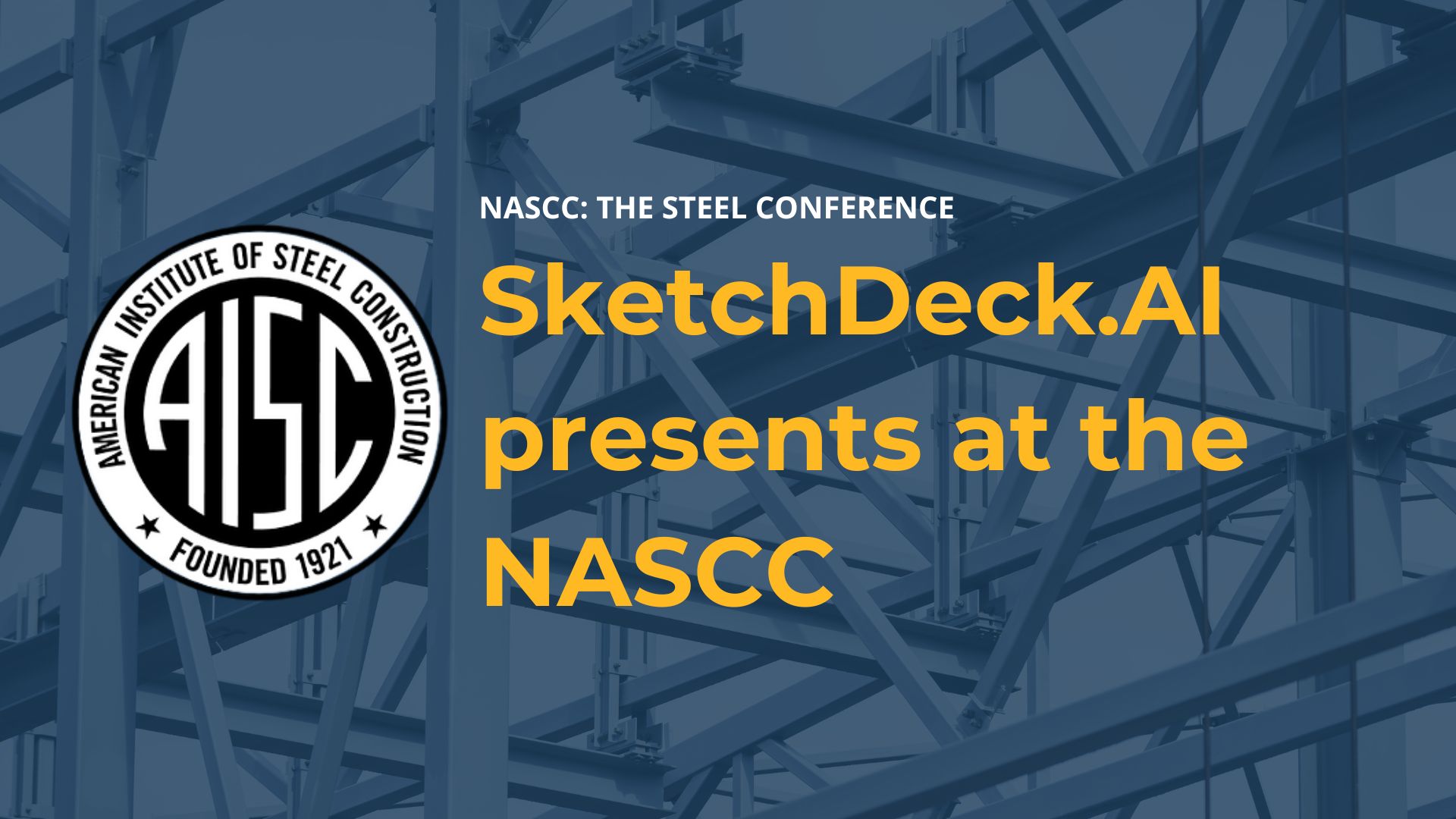
Arrival of AI in Structural Steel
The steel industry is increasingly turning to Al as one way to help improve efficiency and tackle problems.
19 April, 2024
NOTE: This article was originally published in AISC's June Edition of Modern Steel Construction
ARTIFICIAL INTELLIGENCE (Al) has taken the world by storm, revolutionizing the way machines and computer systems think, learn, and perform tasks that were previously the exclusive domain of human intelligence. While some industry sectors have been reluctant to use Al and are skeptical of its impact, the steel industry is increasingly pushing past its initial hesitation and tackling age-old challenges with Al.
The construction and trade industries are plagued with significant issues in labor shortage, low productivity, volatile costs, and manual and repetitive workflows ripe for Al technology innovation. Al systems today can perform tasks like understanding human language, recognizing patterns, learning from experience, and making predictions and decisions. There is no better time than now for innovations that can be used to reduce wasted time and material, alleviate worker stress, and help our industries work safer and faster. Al is already impacting construction speed and quality, efficient material use, and will continue to impact the planning, designing, fabrication, and construction phases of projects.
Historical Context
To understand why Al is poised to have a transformative impact across industries, start from the earliest mentions of Al and the breakthroughs that led us to where we are today. In 1950, computer scientist Alan Turing introduced the "Turing Test" —also called the "Imitation Game"-in his paper, Computer and Machine Intelligence. The Turing Test measures a machine's intelligence by having a human evaluator interact with a machine and a human, without knowing which is which, and judge the machine's success based on whether it can convincingly mimic human behavior.
Five years later, scientist and professor John McCarthy, known as the father of Al, held a conference at Dartmouth College and coined the phrase "Artificial Intelligence." Throughout the next two decades, scientists advanced Al technologies and some companies began using them to support human workers.
After decades of incremental research progress and exponential growth in available computing power, Al can now replicate human performance on a wide range of tasks. In recent examples, Al systems have passed the multiple choice and written portions of the bar exam and the highly competitive Fundamentals of Engineering Environmental Exam.
Since late 2021, public awareness of Al has exploded with advances in Generative Al, a subset of Al that can generate new content, such as images, text, audio, or video, similar to or indistinguishable from real examples. These systems use vast amounts of data collected from the Internet to allow the models to learn patterns. The most well-known generative Al tool today is Chat- GPT, which can generate human-like responses to text prompts. Generative Al tools can paint pictures, write poetry, develop archi- tectural designs, and establish proposals independently.
Common Types of Al and Their Applications
A single Al system has yet to match or exceed human-level intelligence across a wide range of cognitive tasks, a benchmark referred to as artificial general intelligence (AGI). Instead, existing Al applications are limited to narrowly defined ones that mimic human performance on specific tasks-referred to as narrow Al.
Today's most popular Al systems leverage vast amounts of data using neural networks, a mathematical structure inspired by the biological neural networks found in the brain, to uncover patterns, learn, and make predictions from available data. These neural networks and the architectures developed around them have led to significant advancements in computer vision and natural language processing-two subsets of narrow Al—as well as other areas. Project owners, engineers, architects, fabricators, and contractors have leveraged the advancements to work faster and more accurately.
Computer vision is a powerful technology used to interpret and understand the visual world. Within construction, computer vision algorithms are used to monitor construction progress and identify safety risks faster and often more accurately than a human can. One exciting application of computer vision allows fabricators to scan construction bidding plans and output material takeoffs.
For example, King Steel, an AISC member fabricator in Lawrenceville, Ga., is one of many fabricators using SketchDeckai's program "LIFT" to cut their material takeoff times by 50%, giving them two extra days per week to focus on higher-value tasks.
Natural language processing (NLP) is an Al technique embedded in popular applications like virtual assistants or chatbots. It allows computers to understand, interpret, and generate text and speech in a way that is understandable to humans. The steel industry and other construction contractors can use custom built NLP models and tools to scan contracts to identify risks, scope, and missing components ahead of time.
Many NLP applications function as virtual assistants, researchers, and consultants to help ensure consistent quality and considerations within contracts. When thinking about where NLP might be useful in your organization, consider where you could use an assistant to read documents and answer questions or write reports based on their reading.
In addition to working with images and text, Al can analyze a wide range of structured and unstructured data sources that can be used at all stages of a construction project.
In the design and planning processes, Al systems could analyze enormous amounts of data from past projects, material properties, and environmental factors to support the design of efficient and cost-effective steel structures. Some engineers and designers are using these systems to create internal search engines for their technical data sets, and others have attempted to use these tools to provide a cold start during design, proposal writing, contract creation, and review that saves valuable time.
Predictive maintenance and quality control are other vital areas where Al can impact the construction industry by monitoring steel structures and collecting data in real time from various cameras, sensors, and devices. Al algorithms can take the data and detect potential issues, such as corrosion, fatigue, and structural weakness, before they cause damage or harm. Proactive and predictive maintenance reduces downtime and ensures the safety and durability of steel structures.
Similar technologies to those that monitor structures can also predict equipment failures before they happen. By monitoring machinery and equipment operational conditions, typically with sensors and data analytics software, Al can identify patterns that could indicate a potential breakdown or significant wear, providing consistent quality during production and increasing safety.
Work previously done by an individual can now be completed with Al's help and reduce the time and effort required in design, planning, and construction phases. Streamlined processes will benefit owners, designers, fabricators, and contractors when dealing with changing information during design and construction and while processing numerous data points in complicated projects.
Considerations for Al Implementation
Al's opportunities are endless, but it is not yet infallible. Creativity and speed can at times come at the cost of accuracy. In some cases, Al systems can hallucinate, making connections in the data where none exist. A generative Al tool used to describe an image or summarize a document may add details that aren't present in the image or in the document itself.
Those glitches have made companies and workers ask if they can trust Al. Will it be accurate enough? Is company data private and safe? Are teams and staff prepared for the impact it will have? How and where should companies start implementation?
In high-stakes applications where errors could have severe financial, societal, or safety consequences, using systems and designing workflows that incorporate human oversight and intervention can mitigate risks and ensure safety. While Al can often outperform humans in narrow tasks with great accuracy, the more complicated a decision-making process becomes, the higher the likelihood for Al errors. A human-in-the-loop approach is essential to building trust within an organization and mitigating the impact of errors that are inherent in probabilistic systems.
Successful Al implementation often requires identifying individuals within an organization who are enthusiastic about Al and willing to champion its adoption. They should be advocates, educators, and role models for others, helping to promote a culture of innovation and learning. Companies should empower these Al champions or specialists to lead Al initiatives, share knowledge, and drive organizational change.
It's also important to invest in skills development and upskilling for your teams to gain the knowledge and expertise required to work effectively with Al. Many Al tools and educational options are available for free to the public.
For those not sure where to start, think about your organization's most pressing challenges. Are your teams overwhelmed by the amount of work they process? Are you having difficulty managing your schedules, completing your designs promptly, or responding to customers? Using Al to tackle your most significant challenges will often lead to the highest impact on your organization. Despite a keen focus on your biggest problems, starting small and re-investing in technologies that show great promise is a sure way to win with Al.
Future Outlook
Many fabricators across the country using Al software are already seeing its benefits. SteelFab, Inc. vice president of preconstruction Jonathan Mertz and senior estimator Garrett Gallagher each attest to Al creating time savings that help the company minimize errors, bid on more work, focus on proposals, respond to customers faster, and improve the overall quality of bids. A novelty tool for them and others not long ago has quickly become an essential part of their work.
Similar stories are being told across multiple industries. As Al continues to revolutionize industries, its transformative power is clear: by harnessing its potential, companies can overcome labor shortages, reduce costs, and drive growth, ultimately gaining a competitive edge in a rapidly evolving landscape.
More Blogs
Attesting to Al in Steel Construction
Fabricators discuss how implementing Al has improved productivity and share their experiences working with steel-specific Al.
Read story
2024 NASCC Recap
The NASCC (North American Steel Construction Conference) in San Antonio was a thrilling event for all attendees, especially those interested in the intersection of artificial intelligence and the steel industry.
Read story
Meet Daniel Kamau, Founder of SketchDeck.AI
Daniel Kamau (’20 MBA) graduated into a challenging environment but saw an opportunity to start his business – SketchDeck.ai
Read story
Start Today
Reach Out and Let's Start Building Together
Have questions or ready to see LIFT in action? Our team is here to help. Contact us today to schedule a demo or discuss how LIFT can streamline your construction workflow and boost your project efficiency.




